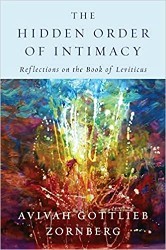Fiercely engaging, deftly argued, and comprehensively researched, this scholarly study of one of the most prodigiously successful modern American children’s book authors, Maurice Sendak (1928−2012), looks at his career primarily through the lenses of ethnicity and sexuality. Sendak was born in Brooklyn into a home of Yiddish-speaking immigrants and spent nearly all of his adult life in the closet. Although he was an atheist, this proved no barrier to Sendak’s reckoning with the legacy of Jewish culture through his work. Volumes like Good Shabbos, Everybody and Happy Hanukah, Everybody preceded the masterpieces that he wrote and illustrated, such as Where the Wild Things Are and In the Night Kitchen. But the thoroughness with which Golan Y. Moskowitz explores Sendak’s queer identity, which lent his boundary-busting tales their haunting power, marks an interpretative advance over Selma G. Lanes’ The Art of Maurice Sendak (1980). That magisterial monograph doesn’t address the key part of his life that Sendak kept secret: only his closest friends and associates knew that he was gay.
The thesis of Wild Visionary can be crisply summarized: Sendak’s unique artistic perspective was born out of the traumas of his sickly childhood. He harbored ongoing fear of the perils that might lurk outside of his home and neighborhood, and celebrated his bar mitzvah knowing that close relatives were being slaughtered in Poland. As he got older, he was constantly aware of his marginality and difference. His work, however, did not seek to forget the emotional threats that scarred his life. Sendak’s recollections of dread and danger instead became the source of a painstaking creativity that Moskowitz readily calls illustrations of “genius.” Sendak believed that his fantasies must instill truths, rather than confirm the conventions of innocence, and this thinking revolutionized the way that young people were understood and addressed.
It is worth noting that despite the “queer Jewish context” from which he wrote, Sendak still projected his singular vision without compromise, winning every imaginable honor in his field, and becoming not only rich and famous but also popular and beloved—Where the Wild Things Are now ranks as the fourth most circulated book in the venerable history of the New York Public Library. Overall, however, Wild Visionary makes a convincing case for the way that Sendak managed to transform his torment into stories that enchanted millions of readers of all ages.
Stephen Whitfield is Professor of American Studies (Emeritus) at Brandeis University. He is the author of Learning on the Left: Political Profiles of Brandeis University (2020).




